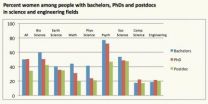(Press-News.org) Doses of medicine 100,000 times smaller than the diameter of a human hair prevent the tissue damage associated with atherosclerosis and other chronic diseases in mice. As part of a National Institutes of Health-sponsored project led by Zahi Fayad, PhD, of the Icahn School of Medicine at Mount Sinai, researchers found that these nanomedicines are able to home specifically to damaged tissue to repair it. This study was published online this week in Proceedings of the National Academy of Sciences.
Inflammation is the body's natural defense mechanism against invading organisms and tissue injury. When under attack by a pathogen such as a virus, the body mounts an immune response that causes inflammation to clear the attacker so the body can return to a healthy state. Scientists believe that in chronic diseases like heart disease or diabetes, the body mounts a prolonged immune response resulting in chronic inflammation and tissue damage. Since the level of inflammation in these diseases is very high, targeted therapeutic solutions are required to help keep inflammation contained.
"Numerous studies have shown that inflammation is the foundation for many chronic diseases, and we need therapies that help resolve the tissue damage that results from that inflammation," said Dr. Fayad, who is the Director of the Translational and Molecular Imaging Institute and Professor of Radiology and Medicine at The Mount Sinai Medical Center. "Nanomedicine is the next frontier in successfully treating and preventing the progression of these conditions without the side effects that come from standard drug therapy."
Researchers at Brigham and Women's Hospital (BWH), Columbia University Medical Center, Massachusetts Institute of Technology, and Mount Sinai developed a nanoparticle that mimics a protein that is critical to the resolution of inflammation in the body. The research team incorporated the nanoparticle into a molecule consisting of three parts: one that controlled the release of the drug into the inflamed tissue, another that controlled how long it circulates in the system, and another that directs the drug to the damaged tissue in the vascular wall, where it binds to receptors in white blood cells.
"The beauty of this approach is that it takes advantage of nature's own design for preventing inflammation-induced damage, which, unlike many other anti-inflammatory strategies, does not compromise host defense and promotes tissue repair," said Ira Tabas, MD, PhD, physician-scientist at Columbia University Medical Center and co-senior author of this study.
The study showed that once the molecule was injected into mice, it homed to the injured tissue, where the drug was released into the vasculature as needed and circulated through the system, resolving the inflammation. These new developments have led the researchers to start investigating the potential of these pro-resolving nanomedicines for their effects on shrinking atherosclerotic plaques in humans.
"The development of self-assembled targeted nanoparticles which are capable of resolving inflammation has broad application in medicine including the treatment of atherosclerosis," said Omid Farokhzad, MD, physician-scientist at BWH, and a co-senior author of this study.
###
Mount Sinai received a contract for almost $16.5 million (#HHSN268201000045C) over five years from The National Institutes of Health (NIH) and the National Heart and Lung Institute (NHLBI) through the Program of Excellence in Nanotechnology (PEN). The contract is one of four issued nationally to develop multidisciplinary research centers with the goal of developing nanotechnology tools for diagnosing and treating heart, lung and blood diseases.
As co-principal investigator, Dr. Fayad leads a team of world-renowned experts in the fields of cardiology, imaging, and bioengineering. He is joined by the center's other co-principal investigator Robert S. Langer, ScD, Massachusetts Institute of Technology, for this highly collaborative program aimed at utilizing nanotechnology to better prevent and treat cardiovascular disease.
Study finds tiny, targeted drug particles may be effective in treating chronic diseases
Nanomedicines prevent tissue damage in inflammatory conditions such as cardiovascular and metabolic diseases
2013-03-20
ELSE PRESS RELEASES FROM THIS DATE:
Study explores long-term water quality trends in near-pristine streams
2013-03-20
For the first time, a study has compared water quality trends in forested streams across the country that are largely undisturbed by land use or land cover changes.
The study, which draws on decades' worth of data from reference streams in six U.S. states and Puerto Rico, underscores the value of long-term data in understanding the patterns and causes of water quality changes in streams and rivers. It is published in the current issue of the journal Environmental Research Letters.
"Much of what we know about changes in stream water quality comes from studies where ...
Ben-Gurion U. researchers and Teva Pharmaceutical Industries Ltd. develop psoriasis drug
2013-03-20
BEER-SHEVA, Israel, March 20, 2013 -- Ben-Gurion University of the Negev (BGU) researchers, in collaboration with Teva Pharmaceutical Industries Ltd., have developed a promising drug candidate to treat psoriasis. The finding was reported in a new paper published in Chemistry and Biology.
Psoriasis is a chronic, non-contagious disease characterized by inflamed lesions covered with silvery-white scabs of dead skin. An auto-immune disease, psoriasis affects at least four million Americans. It is caused by the disturbance in the natural balance between pro-inflammatory signals ...
'End of men'? Not even close
2013-03-20
It's March 2013 – 50 years after Betty Friedan's explosive book launched feminism's "second wave," 41 after Title IX, the equal-opportunity amendment banning sex discrimination in education, was signed into law – and some exceptionally successful women are making a lot of news. Former U.S. Secretary of State Hillary Clinton is riding high in public opinion, winning straw polls for the 2016 presidency. Yahoo CEO Marissa Mayer, after shrugging off maternity leave, has sparked the "Great Telecommuting Debate" with a company-wide ban on working from home. And Sheryl Sandberg, ...
Mechanical forces play key role in assembly and disassembly of an essential cell protein
2013-03-20
Researchers have for the first time demonstrated that mechanical forces can control the depolymerization of actin, a critical protein that provides the major force-bearing structure in the cytoskeletons of cells. The research suggests that forces applied both externally and internally may play a much larger role than previously believed in regulating a range of processes inside cells.
Using atomic force microscopy (AFM) force-clamp experiments, the research found that tensile force regulates the kinetics of actin dissociation by prolonging the lifetimes of bonds at low ...
SMU Lyle School of Engineering course sparks CCL study
2013-03-20
DALLAS (SMU) – The Innovation Gym in SMU's Lyle School of Engineering was buzzing and clanking on a recent morning as students tested robots they built for a specific task – collecting and remediating water samples, as Lyle faculty and students have been doing by hand in refugee camps in Africa and Bangladesh.
The strong work dynamic that emerged among members of the first-year design class and their embrace of the inter-disciplinary team approach used to teach it has drawn the attention of the Center For Creative Leadership, which will send a team of researchers to ...
Altered brain activity responsible for cognitive symptoms of schizophrenia
2013-03-20
Cognitive problems with memory and behavior experienced by individuals with schizophrenia are linked with changes in brain activity; however, it is difficult to test whether these changes are the underlying cause or consequence of these symptoms. By altering the brain activity in mice to mimic the decrease in activity seen in patients with schizophrenia, researchers reporting in the Cell Press journal Neuron on March 20 reveal that these changes in regional brain activity cause similar cognitive problems in otherwise normal mice. This direct demonstration of the link between ...
Some Alaskan trout use flexible guts for the ultimate binge diet
2013-03-20
Imagine having a daylong Thanksgiving feast every day for a month, then, only pauper's rations the rest of the year.
University of Washington researchers have discovered Dolly Varden, a kind of trout, eating just that way in Alaska's Chignik Lake watershed.
Organs such as the stomach and intestines in the Dolly Varden doubled to quadrupled in size when eggs from spawning sockeye salmon became available each August, the researchers found. They were like vacuums sucking up the eggs and nipping at the flesh of spawned-out salmon carcasses.
Then, once the pulse of eggs ...
Spiral beauty graced by fading supernova
2013-03-20
Supernovae are amongst the most violent events in nature. They mark the dazzling deaths of stars and can outshine the combined light of the billions of stars in their host galaxies.
In 1999 the Lick Observatory in California reported the discovery of a new supernova in the spiral galaxy NGC 1637. It was spotted using a telescope that had been specially built to search for these rare, but important cosmic objects [1]. Follow-up observations were requested so that the discovery could be confirmed and studied further. This supernova was widely observed and was given the ...
Estrogen helps keep joint pain at bay after hysterectomy
2013-03-20
CLEVELAND, Ohio (March 20, 2013)—Estrogen therapy can help keep joint pain at bay after menopause for women who have had a hysterectomy. Joint pain was modestly, but significantly, lower in women who took estrogen alone than in women who took placebo in the Women's Health Initiative (WHI) trial. The findings were published online today in Menopause, the journal of The North American Menopause Society.
Studies looking at how estrogen affects joint pain in women after menopause have had mixed results. But this analysis of data on some 1,000 women who had hysterectomies—representative ...
Estrogen may relieve post-menopausal joint pain
2013-03-20
Post-menopausal women, who often suffer from joint pain, could find some long-term relief by taking estrogen-only medication, according to a new study based on the Women's Health Initiative (WHI) that was released online today by the journal, Menopause.
Previous studies of estrogen's influence on joint symptoms had produced mixed results, so researchers examined the findings of the WHI, the largest-ever study of the use of hormonal therapy in post-menopausal women. They examined the findings of the women enrolled in the Estrogen-Alone program, in which women who had undergone ...
LAST 30 PRESS RELEASES:
University of Oklahoma researcher awarded funding to pursue AI-powered material design
Exploring how the visual system recovers following injury
Support for parents with infants at pediatric check-ups leads to better reading and math skills in elementary school
Kids’ behavioral health is a growing share of family health costs
Day & night: Cancer disrupts the brain’s natural rhythm
COVID-19 vaccination significantly reduces risk to pregnant women and baby
The role of vaccination in maternal and perinatal outcomes associated with COVID-19 in pregnancy
Mayo Clinic smartwatch system helps parents shorten and defuse children's severe tantrums early
Behavioral health spending spikes to 40% of all children’s health expenditures, nearly doubling in a decade
Digital cognitive behavioral treatment for generalized anxiety disorder
Expenditures for pediatric behavioral health care over time and estimated family financial burden
Air conditioning in nursing homes and mortality during extreme heat
The Alps to lose a record number of glaciers in the next decade
What makes a good proton conductor?
New science reporting guide published for journalists in Bulgaria
New international study reveals major survival gaps among children with cancer
New science reporting guide published for journalists in Turkey
Scientists develop a smarter mRNA therapy that knows which cells to target
Neuroanatomy-informed brain–machine hybrid intelligence for robust acoustic target detection
Eight SwRI hydrogen projects funded by ENERGYWERX
The Lundquist Institute and its start-up company Vitalex Biosciences Announces Strategic Advancement of Second-Generation fungal Vaccine VXV-01 through Phase 1 Trials under $40 Million Competitive Con
Fine particles in pollution are associated with early signs of autoimmune disease
Review article | Towards a Global Ground-Based Earth Observatory (GGBEO): Leveraging existing systems and networks
Penn and UMich create world’s smallest programmable, autonomous robots
Cleveland researchers launch first major study to address ‘hidden performance killer’ in athletes
To connect across politics, try saying what you oppose
Modulating key interaction prevents virus from entering cells
Project explores barriers to NHS career progression facing international medical graduates
Jeonbuk National University researchers explore the impact of different seasonings on the flavor perception of Doenjang soup
Two Keck Medicine of USC Hospitals named Leapfrog Top Teaching Hospitals
[Press-News.org] Study finds tiny, targeted drug particles may be effective in treating chronic diseasesNanomedicines prevent tissue damage in inflammatory conditions such as cardiovascular and metabolic diseases




